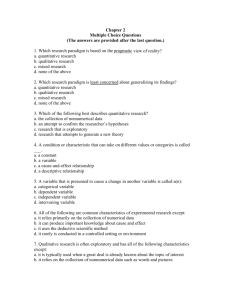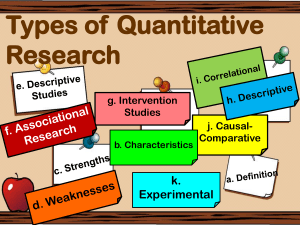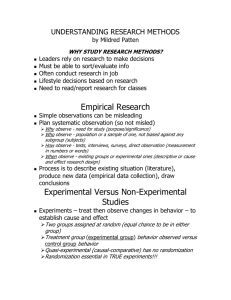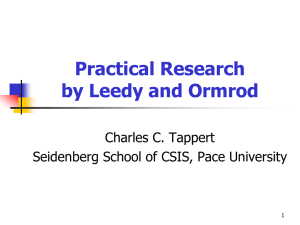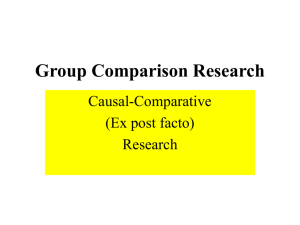topic 3 and 4
advertisement
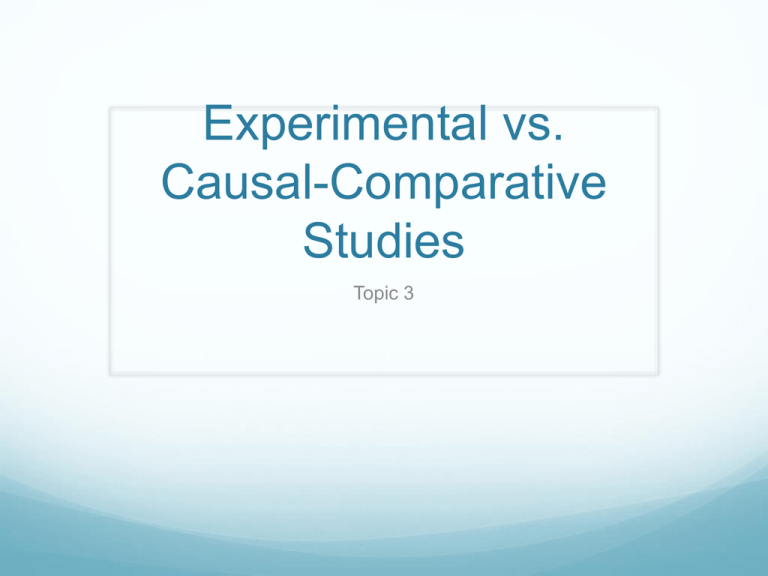
Experimental vs. Causal-Comparative Studies Topic 3 Experimental Study Study where treatments are given to observe their effects Treatments – input or stimulus given by the researcher Not useful when a study would be physically, ethically, legally, or financially impossible Demographics Used to define groups in a study People with similar background characteristics such as socioeconomic status Causal-Comparison Study Non-experimental study Also called ex post facto study Characteristics of the study Observe and describe a current condition Look to the past to identify possible causes No treatment given More potential pitfalls – need to select comparison groups carefully Types of Nonexperimental Research Topic 4 Nonexperimental Studies Purpose is to observe/measure Causal-Comparative Research Researcher does not try to Survey change participants in any way Census Case Study Longitudinal Research Correlational Research Research Methods Causal-Comparative Research Look to the past for causes of a current condition Interested in the causality, but an experiment is not possible Survey Also known as a poll Describes the attitudes, beliefs and behaviors of a population Uses a sample or portion of the population being studied With a good sample, generalizations about the population may be drawn Census Just like a survey, but all individuals in the population participate instead of using a sample Case Study Usually only one participant Often used in clinical psychology Focus on thorough knowledge of an individual over a period of time In-depth questioning occurs Longitudinal Research A study over a long period of time to trace developmental trends Correlational Research Researchers study the degree of a relationship of quantitative variables Example: college admissions test and GPAs “Did those with high admissions scores tend to earn high GPAs?” Research Methods Quantitative Qualitative Historical Quantitative Research Data is easy to quantify or put a number to Allows for statistical analysis Qualitative Research Data is gathered through open-ended interviews Analyzed through major and minor themes in responses Uses semi-structured interviews Core list of questions Deviating follow-up questions Historical Research To understand the past Use facts and dates to understand the dynamics of human history Driven by theories and hypotheses Hypotheses are evaluated using collected data Both qualitative and quantitative methods are used Will not be a focus of this text

